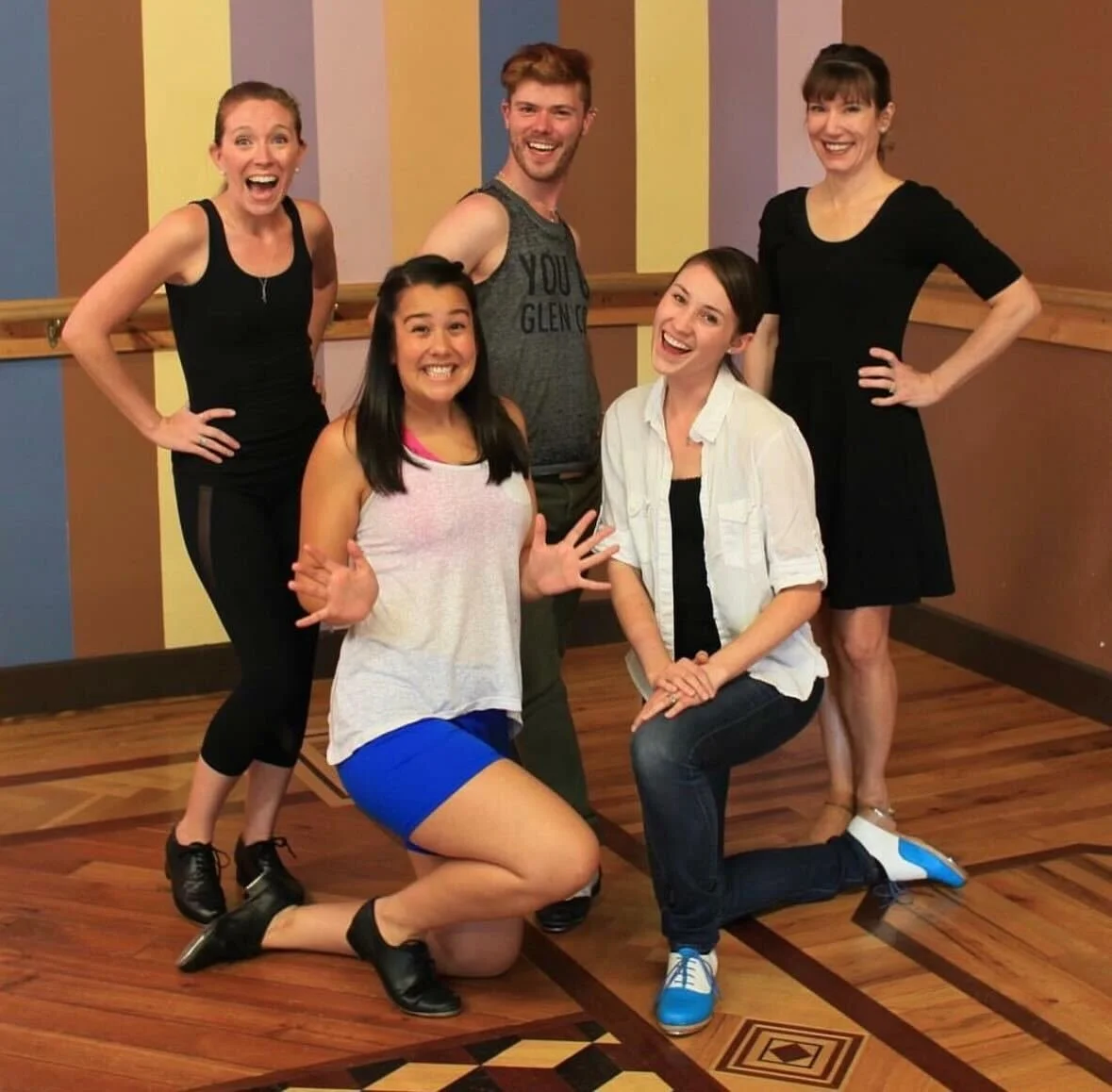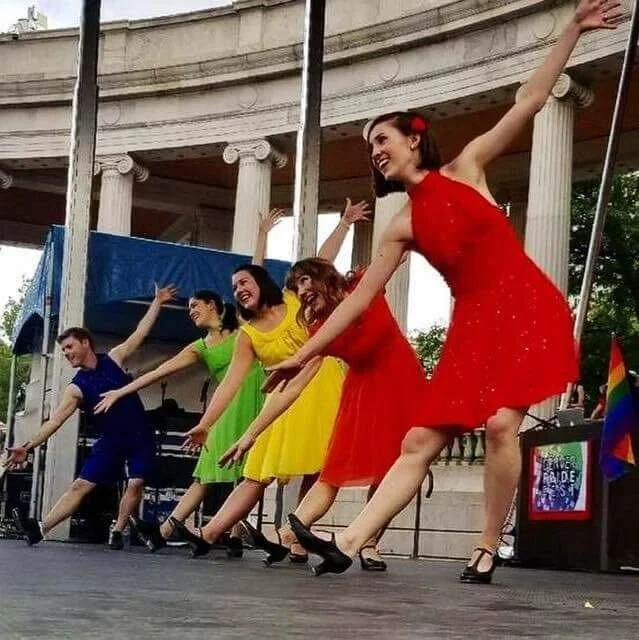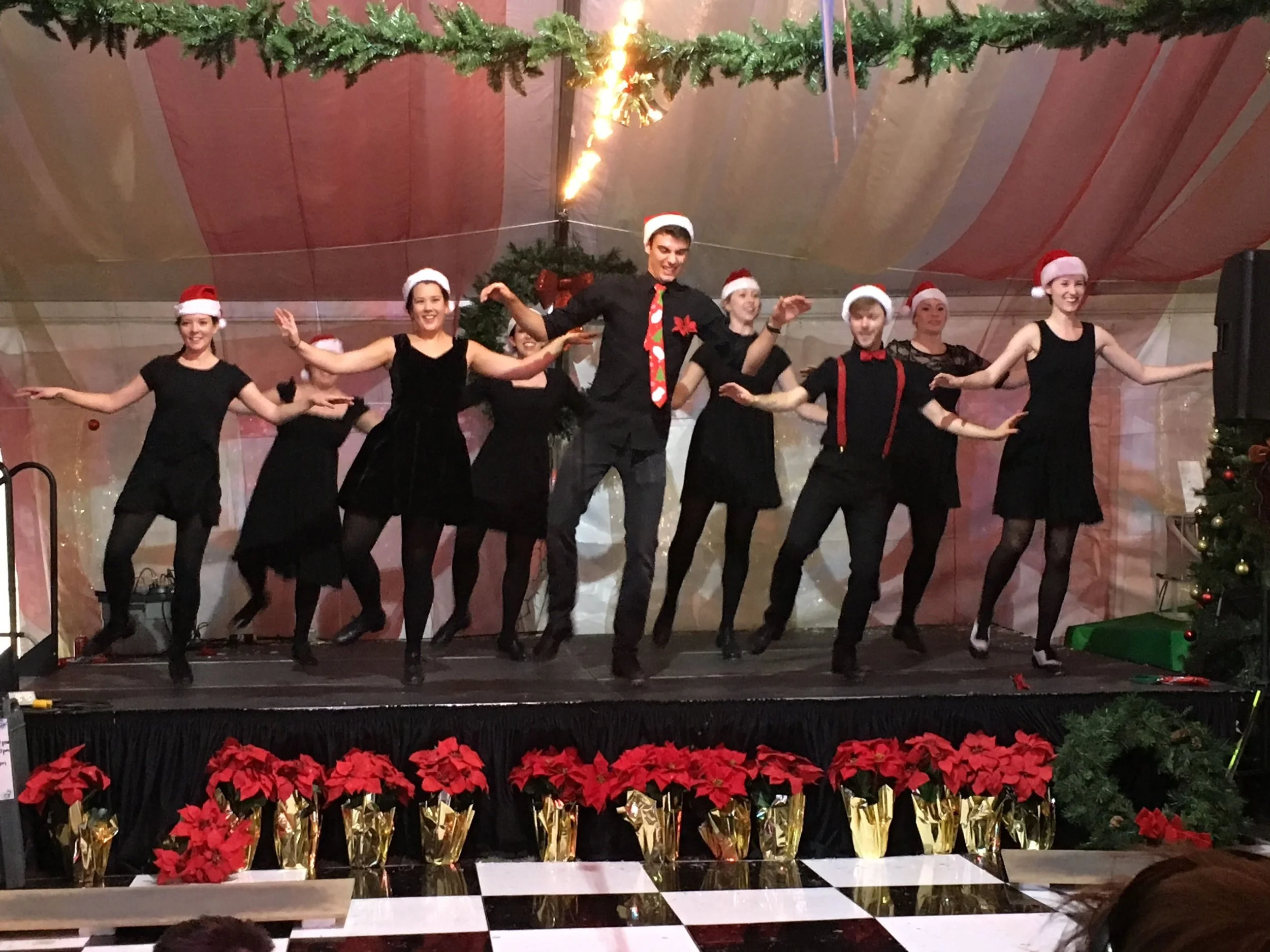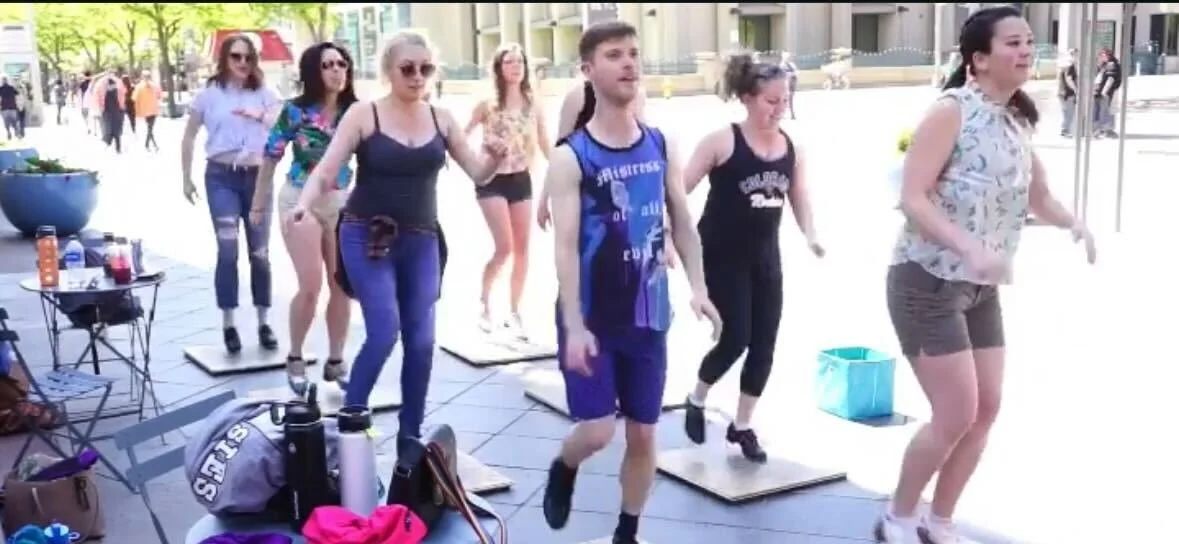The History of Our Company
Six tap dancers walk into a coffee shop—not the setup for a punchline, but the spark that ignited Rocky Mountain Rhythm. In 2015, between sips of lattes, a community was forming, one time step at a time, to create Colorado's premier professional tap dance company.
At the helm was Claire Sheek, a dedicated tap dancer and educator who had been teaching across Colorado since she was 16. Claire’s vision was simple but powerful: to revive the tap dance scene she remembered from her youth. As other dance styles surged in popularity, tap had gradually faded into the background, and Claire was determined to bring it back to the forefront. She sought to reignite a passion for tap’s rich history, its intricate technique, and the creativity of its choreography.
Since its founding in 2015, Rocky Mountain Rhythm has experienced incredible growth and transformation. We’re incredibly fortunate to still have two of our longest-standing original members, Elijah Meader and Michelle Farrell, dancing with us today. As the last remaining “OGs,” I asked them to share their personal stories of our early days and how we've evolved into the company we are now.
Original Rocky Mountain Rhythm members Megan Clark, Elijah Meader, Michelle Farrell, Carlee Taga, and Claire Sheek
Why was Rocky Mountain Rhythm formed?
Michelle: Claire grew up in Colorado during a time when tap dance was thriving. Icons from New York were regularly coming through to teach at festivals like the Colorado Dance Festival and the Rocky Mountain Tap Festival. Legends such as Gene GeBauer and David Parker were not only educating but also preserving the rich history of the art form. This tap community was the environment Claire was immersed in as a young dancer. So, when we started to see a decline in tap’s popularity, Claire recognized an opportunity to spark a tap dance renaissance.
Elijah: I was working full time in the costume shop at the Colorado Ballet so everyone came up to Broadway and 14th to get coffee and hammer out the details of what Rocky Mountain Rhythm was to be before my next shift. Community was really important to Claire. She didn’t see RMR as just a company, but as a home for tap dancers.
Michelle: The history of tap dance was also really important to Claire and she was always looking to continue her education. She would go to the Tap City festival in New York City every summer and participate in the tap teacher training programs, where she would learn historical tap pieces by legends like Buster Brown, Leon Collins, and Bojangles, and then she would bring them back and teach them to us. Tap history is so crucial to American history and she wanted RMR to be a catalyst for keeping these pieces relevant.
Elijah: Big shout out to Barbara Duffy - Claire learned a lot from her and she was a big part of Claire’s tap education.
How did you get involved with RMR?
Elijah: I was taking class at Dance2B with Caroline Younger, and Claire’s tap class happened right before. I kept saying I should get into it, and finally just started showing up regularly. Claire told me about her vision for a professional tap dance company and asked if I wanted to be a part of it.
Michelle: I met Claire through Gene GeBauer when she was taking his class. She approached me after class one week and asked if I wanted to be in a tap company - and I said DO I EVER!
What did the early days of the company look like?
Michelle: After that coffee shop meeting we could tell Claire had big dreams. She was definitely the driver. We started out small and rehearsals consisted of us learning a lot of the historical pieces we still perform today, like Laura, New Lowdown, and BS Chorus. Claire was deeply dedicated to expanding the technical training of the dancers and growing our improvisational skills, all in addition to performance opportunities. We hosted some tap jams and sometimes had open classes, but our dedicated RMR time was mostly spent training and learning.
Elijah: We were doing small one off performances at open mic nights on Tennyson street, making dance films, and busking downtown. We weren’t working on full length productions, mostly just slowly adding historical pieces to our repertoire. Our first original RMR piece was Boogie Woogie Bugle Boy choreographed by Claire, which we still perform today so that is great that we get to keep that part of company history alive.
Rocky Mountain Rhythm filming “Is This The High Life”, one of the first films created
Michelle: We’ve always been a Sunday morning crew, but where we rehearse has shifted several times! I think we’ve been housed at seven different studios at this point. One of our original members, Carlee, owns the dance studio where we first started. We were lucky that we didn’t have to pay for rehearsal space when we started because of Carlee’s involvement and we owe a lot to her and her studio Taps n Toes for helping us get off the ground! We would trade with the studio and perform at their recitals each year in exchange for the free space.
Carlee Taga, Elijah Meader, and Michelle Farrell busking in downtown Denver
What were your first big performances as a company?
Elijah: We performed a few summers at Denver Pridefest and those I would say were our first big performances. The pride performances were also where we started making custom costumes for performances - we would get together and have drinks and sew! It really helped foster the community aspect of us all being friends. Pridefest was also when I started choreographing more; up until that point all of our original choreography was Claire’s.
Rocky Mountain Rhythm performing at Pridefest 2017
Michelle: We started performing at the Denver Christkindlmarket pretty early on, performing historical pieces to holiday music in the beer tent. We performed for drink tickets (which we still do!) and it is still such a fun way to spend the holiday season. It’s incredible that after all this time we still perform at the market and have even expanded from our original holiday rep into an entire holiday performance.
RMR performing in the beer tent at the Denver Christkindlmarket, 2017
Was the company always small? What did the audition process look like in the early days?
Michelle: The company doubled in size in 2018 with the hope of being able to split gigs that were happening at the same time. We started getting asked to perform more and more which was great, but we needed more people in order to do all of these gigs. We did hold auditions every year, but sometimes people who were taking Claire’s adult classes that she taught would stand out and she would ask them to join.
RMR busking downtown in the summer of 2019
So then something happened in 2019 that shifted the trajectory of the company.
Elijah: Claire got an awesome opportunity to move to Texas and be a principal dancer with Tapestry Dance in Austin under Acia Gray. It was an incredible opportunity for her and definitely not one to pass up, but it did also leave us in a weird spot without a director. She had considered dissolving the company, but since Michelle and I were still around she trusted that we would continue her vision with the company while she went to Texas.
What did the 2019 season look like without a director?
Michelle: Because we were such a tight group, no one wanted RMR to just go away. We did a few guest performances here and there, but with no clear direction, people started to lose motivation. We realized all that Clarie had really done for RMR with trying to get gigs and connecting with not just the tap community but the swing dance and jazz music community.
Not only was 2019 a different season but then we get into 2020.
Elijah: There was still no one who felt like they had the capacity to take on director roles until you (Kaitlyn) offered up to take on the Executive Director role in the company and I was happy to partner with you as Artistic Director. Even in 2020 we saw growth because we finally had some direction again and performances to plan for. Before the shut downs we hosted auditions again and held community classes. We did a virtual Pridefest filming, virtual Convergence filming, and created our virtual holiday cards.
Zoom rehearsal in 2020
RMR’s first self-produced show, our Holiday SpecTAPular, premiered in 2021. Since then, we’ve successfully produced three more Holiday SpecTAPular performances, along with almost three Taps on Tap events. We’ve also had the privilege of performing as guests at various events across Colorado, while expanding our community offerings, including sliding scale classes and school outreach programs. Last year, we took a major step forward by becoming a 501(c)(3) nonprofit organization—something that Claire envisioned from the very beginning. It’s an honor to carry forward Claire’s vision and continue the legacy she began 10 years ago.
RMR’s first self produced show, Holiday SpecTAPular in 2021.
What do you envision for the future of RMR?
Michelle: The more people who experience what we do and who we are, and the more opportunities we have to connect with the community, the more individuals will discover the joy of tap dance. At its core, it’s always been about community engagement—whether through performances or educational opportunities. Staying true to that original vision is what has made this journey so special.
Elijah: The community aspect is so huge. I would love to go on tour around Colorado (or around the country!) to expand our community impact even further. We’ve also always talked about doing a performance with live music, honoring the original hoofers in jazz clubs and that would be a great integration of our passion for keeping the history of tap dance alive.
RMR Company Dancers 2024, photo credit: Andrews Artistry









